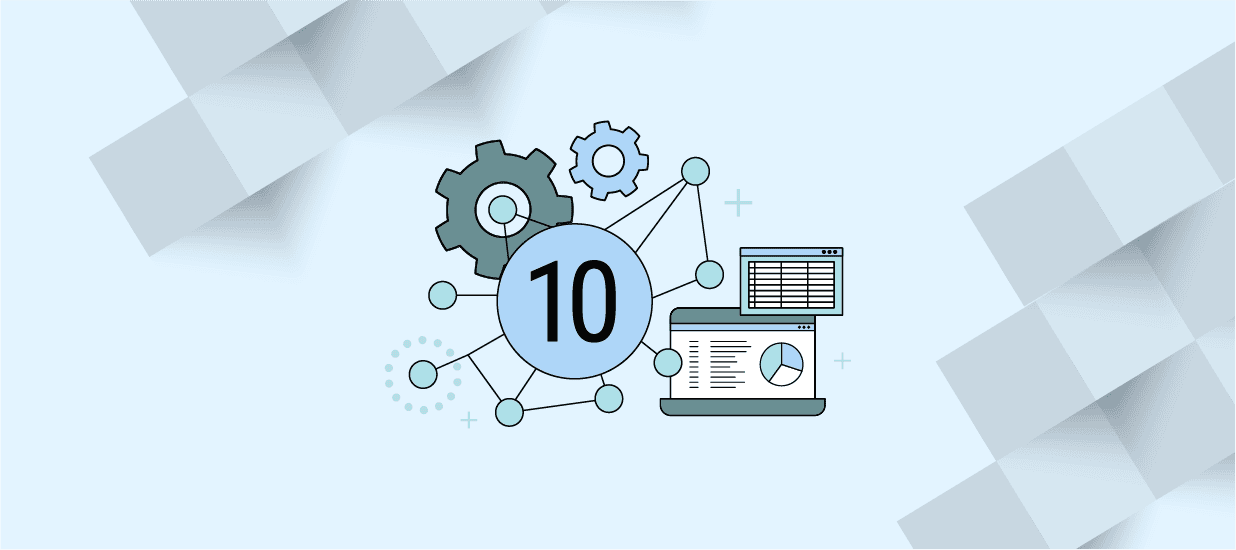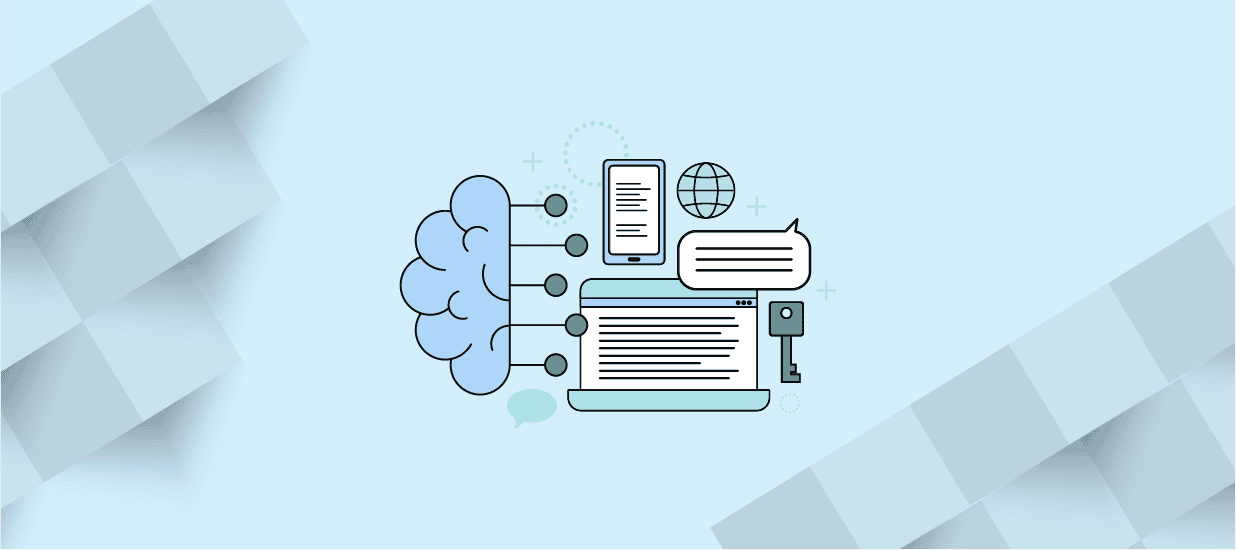Artificial Intelligence (AI) is an interdisciplinary field that involves the development of computer algorithms and models that can perform tasks that typically require human intelligence.
These tasks include natural language processing, speech recognition, image and pattern recognition, decision-making, planning, and problem-solving. AI systems are designed to learn from data and adapt to new situations by using machine learning algorithms such as neural networks or decision trees. They can also use techniques like reinforcement learning to improve their performance over time. Other areas of AI research include robotics, cognitive computing, knowledge representation and natural language understanding.
From ChatGPT to Hypotenuse AI, the word AI has recently gained some traction. Several companies are scrambling to make AI that can write, design and even edit videos. It’s crazy when you think about it. So, how did AI start?
How did AI start?
AI has come a long way and is making progress at incredible speeds. It started with the concept of artificial neurons in the 1940s. This was followed by the introduction of the Turing test in 1950. This test aimed to evaluate a machine’s ability to exhibit intelligent behavior.
However, the development of expert systems in the 1980s saw machines emulating human decision-making abilities, followed by a resurgence in AI with the emergence of intelligent agents in the 1990s.
Today, AI has advanced to an incredible level thanks to the development of big data, deep learning and data science. Now, major companies like IBM, Google, Facebook and Amazon use AI to create innovative devices and solutions.
One of the most significant benefits of AI is automation. Automation is simply using machines to perform human tasks. Automation leads to increased productivity and production rates. It also frees up resources for more critical tasks.
The distinction between AI and other technologies
The distinction between AI and other technologies lies in their ability to emulate human intelligence. While most technologies operate based on pre-programmed rules, AI has the capacity to learn from experience, adapt to new situations and make decisions independently. This ability is made possible through machine learning algorithms that allow AI systems to analyze data, recognize patterns and improve their performance over time.
Types of AI: Narrow and General
Artificial Narrow Intelligence (ANI):
This is also known as “weak AI,” it’s a type of AI that can perform a specific task better than a human. It is limited to one job and follows the rules, parameters and contexts that it is trained with.
Some real-life examples of ANI include:
- Interfacial recognition systems used in security to identify individuals based on their facial features or behavior patterns.
- Music recommender systems that use machine learning algorithms to suggest songs based on users’ listening history.
In manufacturing, ANI is being used to automate repetitive tasks such as quality control inspections, assembly line operations and predictive maintenance. By using ANI technologies like robots and automation software, manufacturers can improve efficiency, reduce errors and increase production output.
General AI
General AI is also known as strong AI. This type of AI can reason and adapt to new situations like humans. It doesn’t rely on pre-programmed responses. Instead, General AI can navigate any situation without human intervention. While General AI is still in its early stages, advancements in Natural Language Processing and Computer Vision are closing the gap between Narrow AI and General AI.
Examples of General AI include:
- Chatbots that can understand language and respond without relying on pre-programmed responses.
- Autonomous vehicles that can navigate any situation without human intervention.
In healthcare, General AI is being utilized to help diagnose illnesses and provide personalized treatment recommendations. For instance, IBM Watson Health uses machine learning algorithms to analyze medical data from patients’ electronic health records (EHRs) to identify potential diagnoses or treatment options for physicians.
The Foundations of AI
One of the key components of AI is machine learning, which enables machines to learn and improve their performance based on data. Although machine learning and AI are often used interchangeably, they are distinct concepts. While all machine learning is a part of AI, not all AI involves machine learning.
Machine Learning
Machine learning has become ubiquitous in many areas of our daily lives, including banking, online shopping and social media. These technologies make our experiences more efficient, smooth and secure. There are two main types of machine learning: supervised and unsupervised.
Types of Machine Learning
Supervised Machine Learning
Supervised machine learning is a type of algorithm guided by a data scientist.
The algorithm is taught what conclusions to make by using a dataset that has already been labeled and has a predefined output. Think of it like a medical student learning to identify nerves by looking at a picture book that has the names of the nerves written under each picture.
Examples of supervised machine learning algorithms include:
- Multiclass classification
- Linear and logistic regression
- Support vector machines
Unsupervised Machine Learning
Unsupervised machine learning does not require a human to guide the algorithm. Instead, the computer learns to identify complex processes and patterns independently.
Like medical students learning to identify nerves in the body without help, they would look at the different nerves and know the difference.
Examples of unsupervised machine learning algorithms include:
- Component analysis
- K-means clustering
- Principal, independent and association rules
Reinforcement learning
Reinforcement learning is a type of machine learning where the best action is learned through positive rewards. It’s like toddlers learning how to walk–they adjust their steps based on the outcome, taking smaller steps if they fail.
Similarly, machines and software agents know the proper behavior through feedback from the environment.
Deep Learning
Deep learning is a type of machine learning that uses a neural network with three or more layers.
This network is like a simplified version of the human brain that can learn from lots of data. A single-layer network can make predictions, but more layers help to improve accuracy. These neural networks are essential because they can make generalizations and inferences on their own.
Deep learning is used in many artificial intelligence applications and services that automate tasks without human help. It is already being used in voice-activated TV remotes and fraud detection for credit cards.
Natural Language Processing
Natural Language Processing (NLP) is a field of computer science that tries to teach computers how to understand human language, whether in written or spoken forms. Thus, helping computers to communicate and interact with humans more effectively by bridging the gap between human and machine communication.
Applications of NLP in AI
NLP helps to make smartphones intelligent enough to suggest words and learn from our texting habits. It can also be used for automatic summarization, which can quickly and accurately summarize the meaning and emotional context of information. This is especially useful in processing large amounts of data.
Applications of AI
Here are some significant applications of AI.
Education
AI in education is being used to analyze students’ learning process in subjects ranging from calculus to chemistry, highlighting the areas where individual learners need support.
This is achieved by training an AI program on the work of hundreds or thousands of students, creating a knowledge base of common areas that cause difficulties for learners. As a student uses the system, the AI zeroes in on specific areas to focus on and offers customized lessons to improve skills. In some cases, chatbots provide motivational messages. These insights are also shared with teachers so they can provide targeted assistance.
According to the Center for American Progress, “technology and artificial intelligence can vastly improve the types of assessments teachers use to guide students in their learning.”
Finance
In the financial services industry, deep learning is most prevalent in capital markets and retail banking, while machine learning is commonly used in fintech. Across all sectors of financial services–including investment banking and retail banking–more than 75 percent of companies use at least one of the primary accelerated computing applications, which include high-performance computing (HPC), machine learning and deep learning.
Transportation
The travel industry benefits from AI-enabled chatbots for improving customer service and engagement, while the real estate industry is leveraging AI for more efficient and effective agents and brokers.
Customer Service
The retail and e-commerce industries use AI in product recommendations and chatbots to enhance the customer experience.
Security and Surveillance
AI can use vast amounts of data to create predictive models for security and surveillance, helping predict dangers in the area.
Potential Challenges and Ethical Considerations
As AI continues to advance, there are a number of ethical considerations that must be taken into account. One of the most pressing concerns is the potential for AI to exacerbate existing social inequalities.
If AI is used to automate jobs, for example, it could lead to significant job loss for lower-skilled workers. This could further widen the wealth gap and result in significant social and economic issues.
There is also the potential for AI to be used in harmful ways, such as in the development of autonomous weapons systems. The use of AI in this manner could lead to the loss of human life on a massive scale and must be carefully regulated.
Another ethical consideration is the potential for AI to be biased or discriminatory. If AI is trained on biased datasets, for example, it could perpetuate existing social biases and lead to discriminatory outcomes. AI systems are created by data scientists using data from other humans, who all have their own bias.
As bots become better at modeling human conversation, they can build relationships with people. Humans are limited in the attention and kindness they can expend on another person, but artificial bots can channel unlimited resources into building relationships. Machines can also trigger the reward centers in the human brain. This can be an opportunity to nudge society towards more healthy behavior. However, it could also lead to addiction and other adverse outcomes.
To address these ethical concerns, there must be greater collaboration between researchers, policymakers and industry leaders to develop ethical guidelines for developing and using AI. Additionally, there must be greater transparency in the development of AI systems, with researchers and developers working to ensure that their systems are fair and unbiased.
Conclusion
AI has the potential to transform the world in ways that we can’t yet fully imagine. From healthcare to education to the environment, AI has the potential to solve some of the world’s most pressing challenges.
However, the development and use of AI must be guided by ethical considerations to ensure that it is used in a responsible and ethical manner. With greater collaboration between researchers, policymakers and industry leaders, we can ensure that AI is used to benefit society as a whole rather than exacerbating existing social inequalities.
As we look to the future, it is clear that AI will play an increasingly important role in our lives. By working together to address the ethical concerns surrounding AI, we can ensure that it is used to build a better future for all.
Ready to Join the AI Revolution?
There’s never been a better time to learn about data analysis than now.
Data analysis transforms how we approach complex problems and uncover hidden insights. The rapid advancements in technology and machine learning enable us to delve deeper into the vast amounts of data surrounding us, providing a wealth of knowledge at our fingertips.
With the power of data analysis, you can uncover new trends, identify patterns and make informed decisions that were previously out of reach. This makes it an exciting and constantly evolving field to be a part of. Learn more about data analysis now.
Author
-

The Pragmatic Editorial Team comprises a diverse team of writers, researchers, and subject matter experts. We are trained to share Pragmatic Institute’s insights and useful information to guide product, data, and design professionals on their career development journeys. Pragmatic Institute is the global leader in Product, Data, and Design training and certification programs for working professionals. Since 1993, we’ve issued over 250,000 product management and product marketing certifications to professionals at companies around the globe. For questions or inquiries, please contact [email protected].
View all posts








